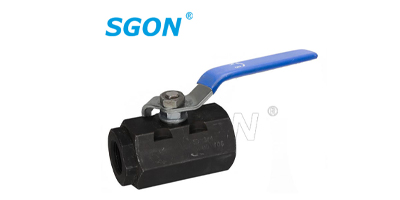The lifespan of a high - pressure threaded ball valve in normal use depends on multiple factors. Although it's hard to give an exact number of years, grasping these factors helps predict and extend its service life.

Material Quality
Materials used in the valve are crucial. For the body, high - grade carbon steel offers strength and durability for non - corrosive settings. Stainless steel, with great corrosion - resistance, is better for moist or corrosive environments. For example, in a chemical plant, a stainless - steel valve body can last longer than a carbon - steel one.
The ball, often made of hardened metals or alloys, withstands high - pressure and frequent operations. The seat, usually of PTFE or other high - performance polymers, provides sealing. But a wrong combination of ball and seat materials can cause premature wear. If the ball is too hard for the seat, it may over - abrade the seat, shortening the valve's lifespan.
Working Environment
The operating environment impacts the valve's longevity. Temperature matters. Extreme heat can make materials expand and contract, leading to warping or cracking. In high - temperature applications like power plants, valves need heat - resistant materials. Cold temperatures can make materials brittle, raising failure risks.
The media flowing through the valve is also key. Aggressive or abrasive media, such as slurries with solid particles, can quickly wear the ball and seat. In mining, where valves handle mineral - laden slurries, the constant scraping shortens the valve's lifespan. Corrosive media can eat away at metal parts, weakening the valve.
Usage Patterns
The cycling frequency, how often the valve is opened and closed, affects its lifespan. Frequent cycling subjects the valve to repeated stress. Each operation causes friction and wear between the ball and seat. In a batch - processing plant with many daily cycles, valve wear is much greater than in an occasionally - used backup system.
Over - pressurization is a major issue. If the valve faces pressures beyond its rating, internal components may deform or fail, leading to leaks or breakdown. It's vital to keep the operating pressure within limits.
In general, with proper material selection, a suitable working environment, and correct usage, these valves can last 5 - 15 years or more. Regular maintenance, like checking for wear, lubricating (if needed), and replacing worn parts, also helps extend the valve's lifespan and ensure reliable operation.
GET A QUOTE